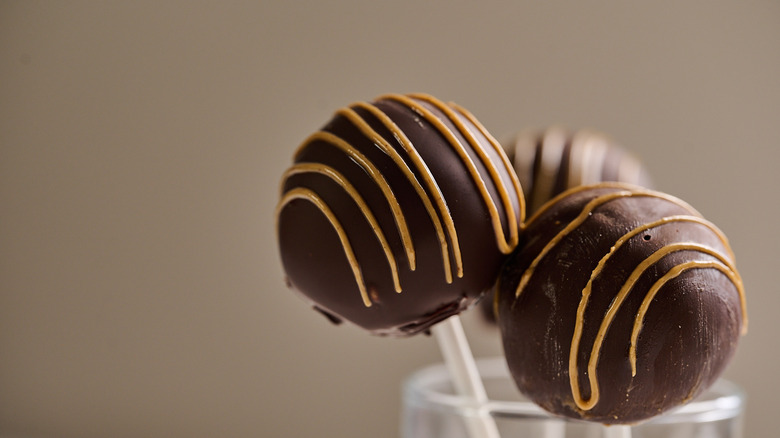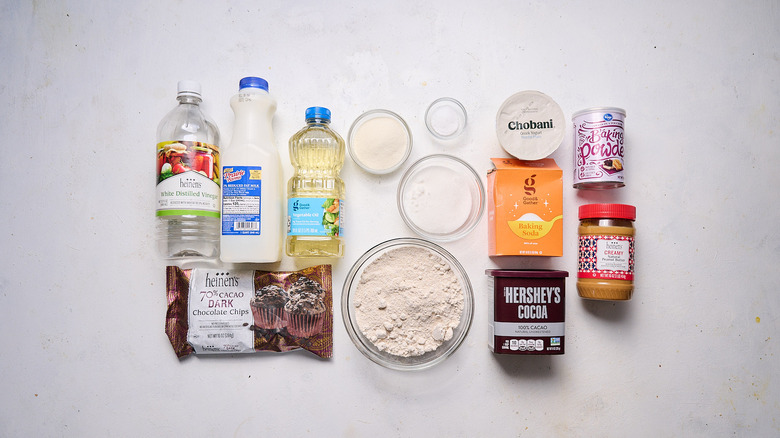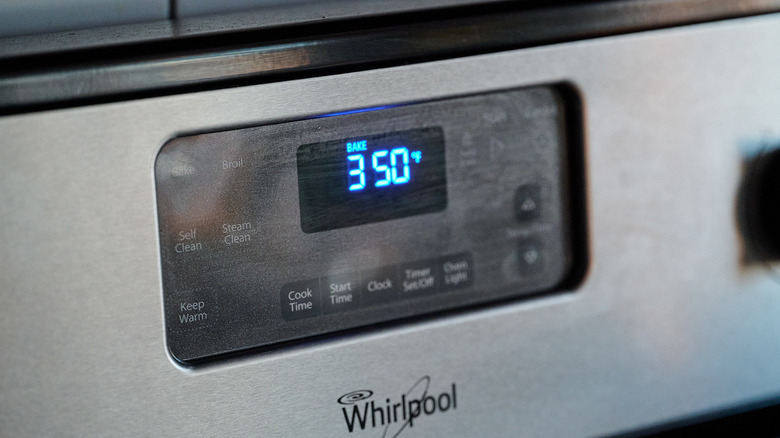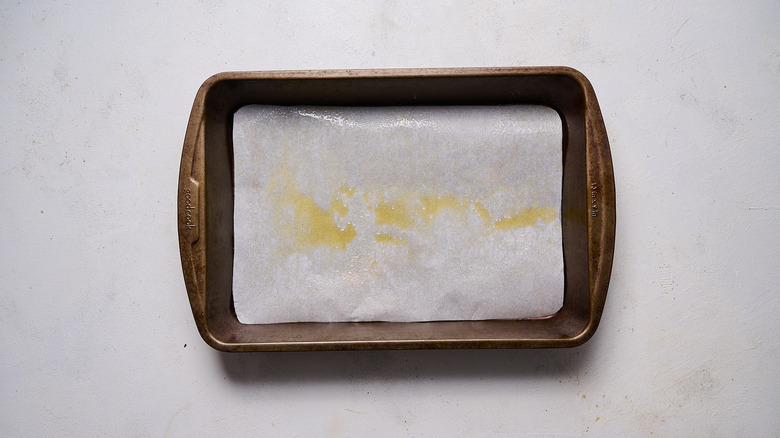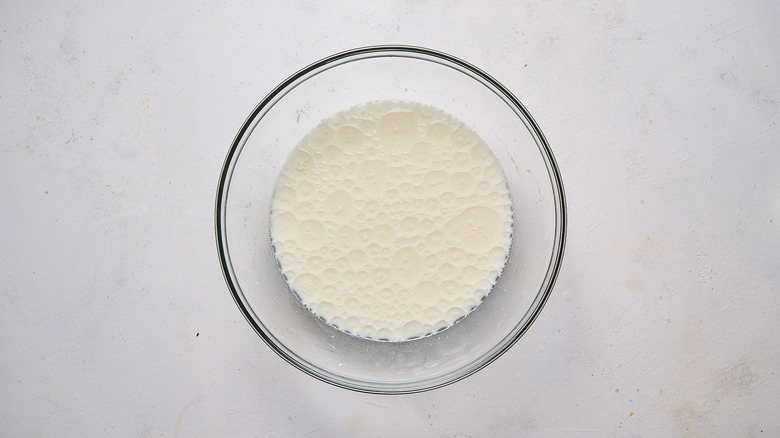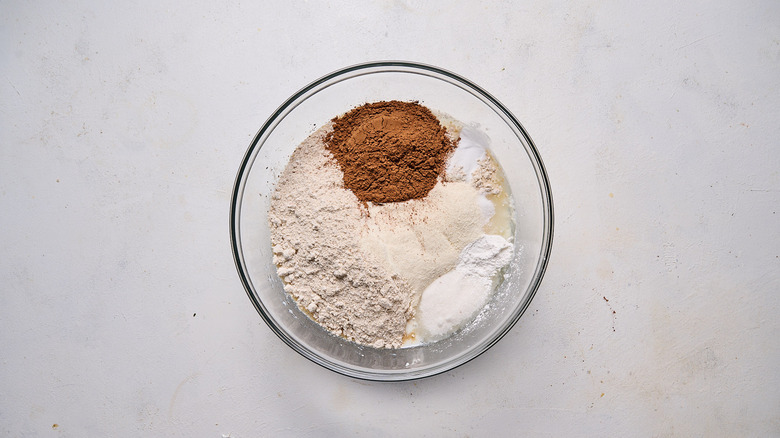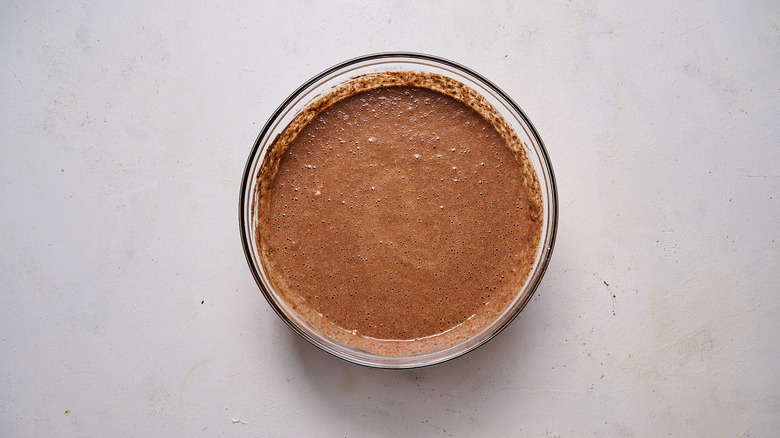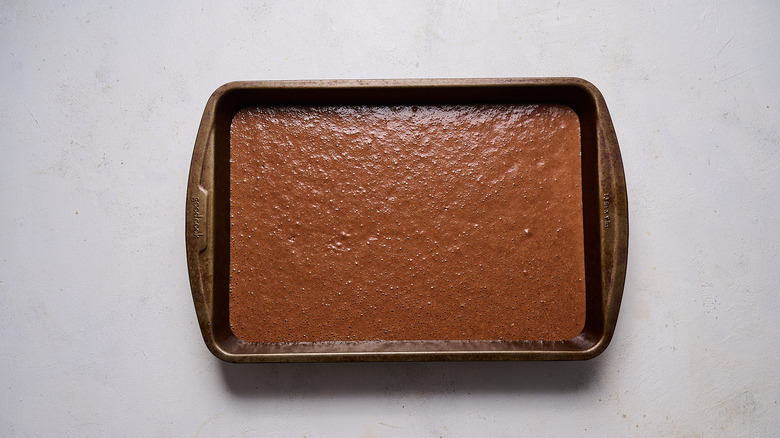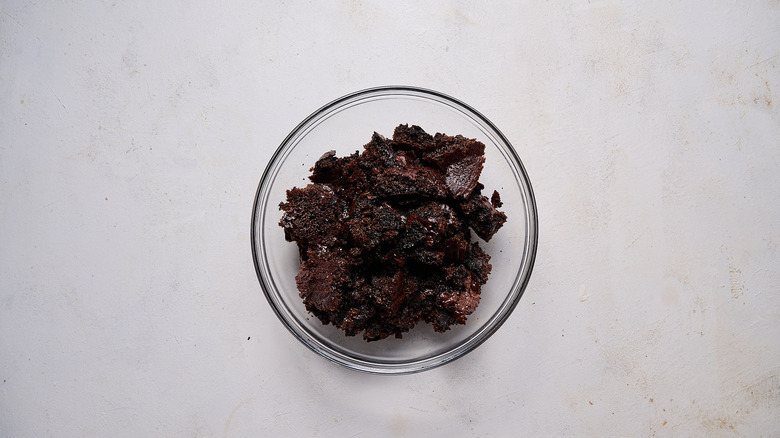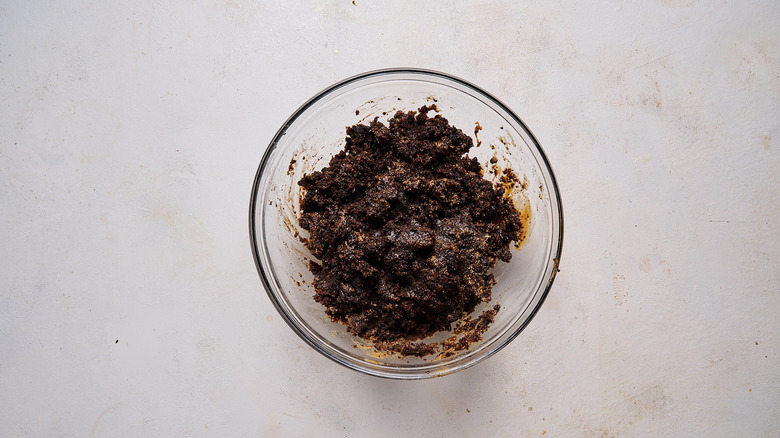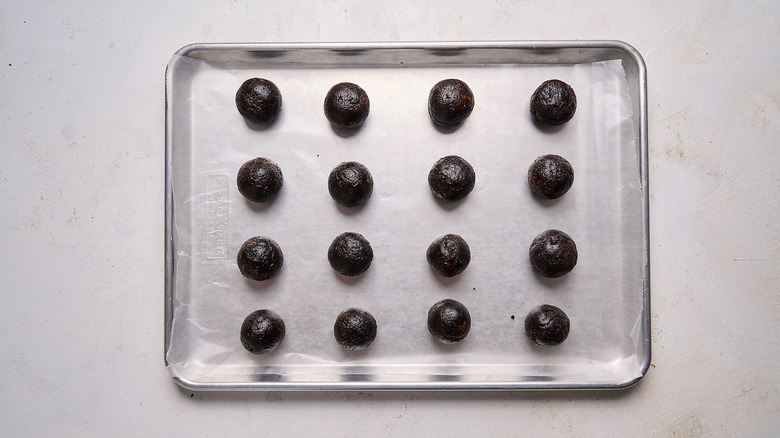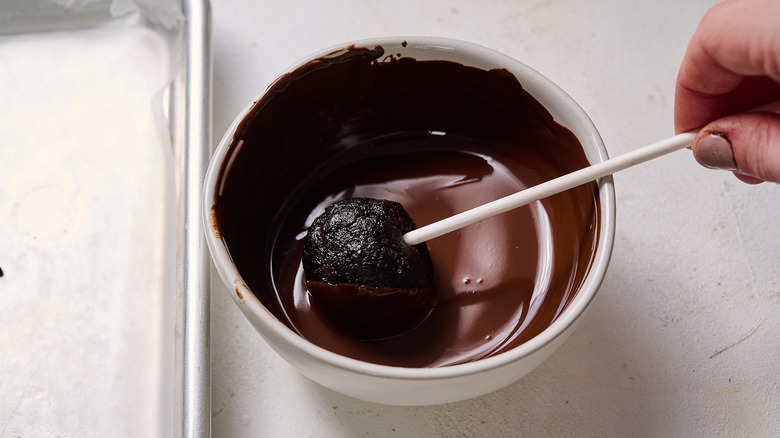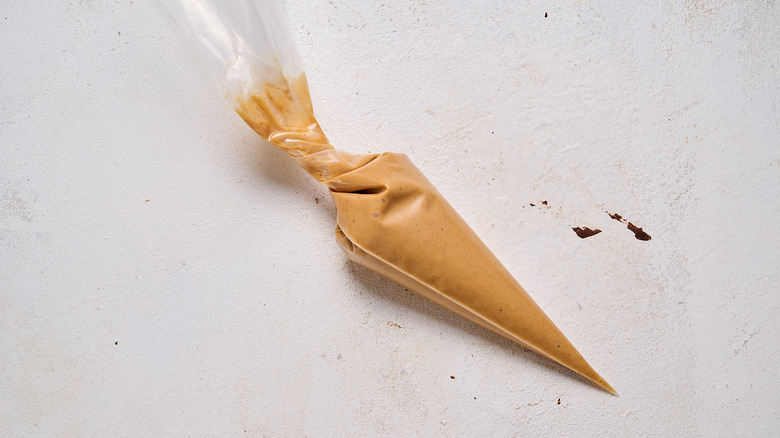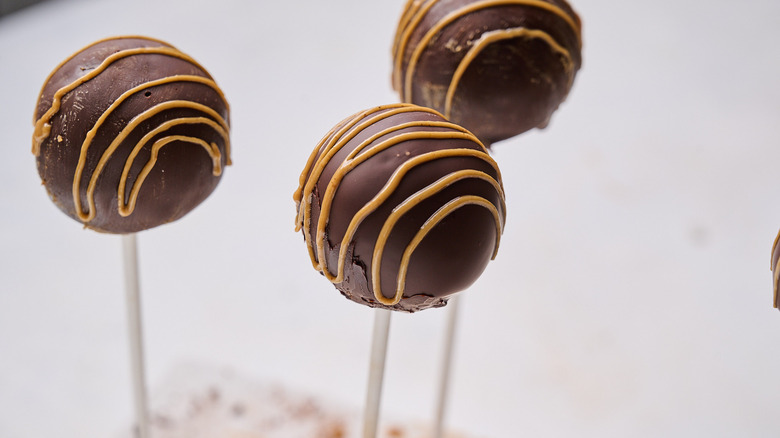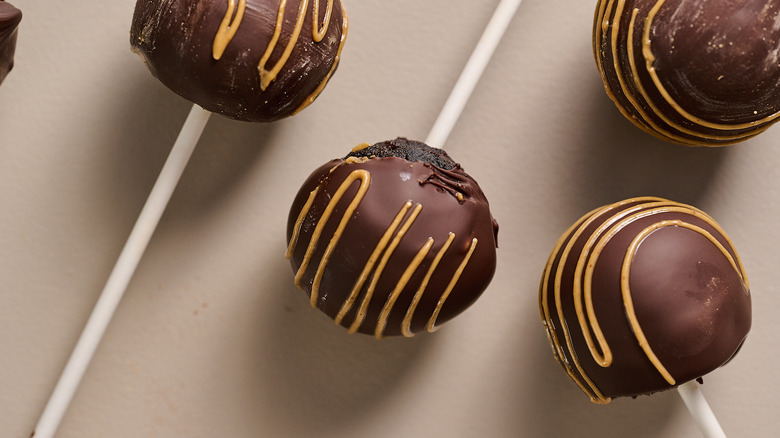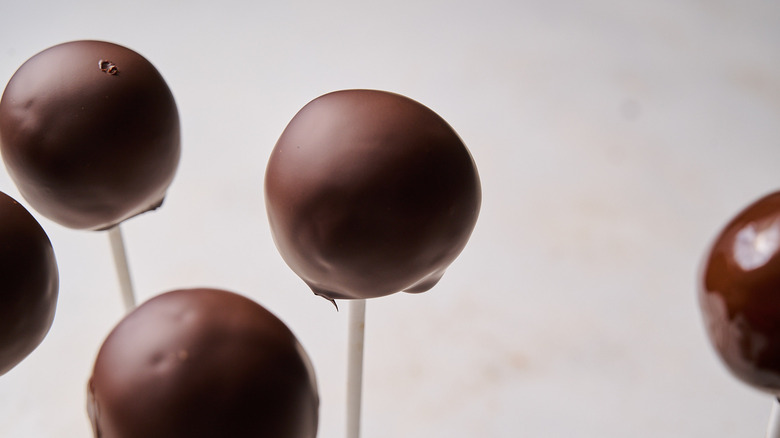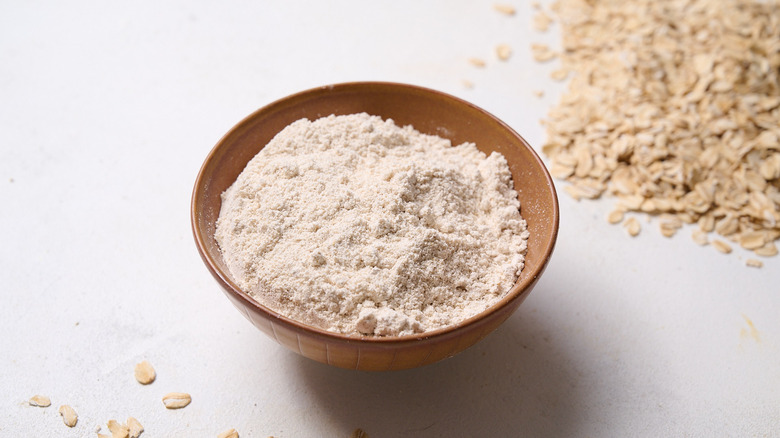Protein-Packed Cake Pops Recipe
Diets are hard. Whether you're trying to cut down on sugar or working to add in more protein, it can be a challenge to find a balance in our meal plan, especially when it comes to dessert. For most of us, that sweet treat at the end of the day is our weakness, and often the reason we aren't seeing the results we were hoping for. You shouldn't have to compromise, though; instead, try making the dessert work for you. These rich and chocolatey cake pops developed with Michelle McGlinn are packed with Greek yogurt, oats, protein powder, and peanut butter for the perfect, bite-sized boost of protein and sweet treat all in one. And, while some protein bars do the trick, so many more are dry, chewy, and tasteless. Unlike the bland bars we rely on for that extra boost of protein, these cake pops are moist, fluffy, and perfectly sweet. You can, in fact, have your cake and eat it, too.
Gather the ingredients for protein-packed cake pops
While many cake pop recipes start with boxed mix, this recipe starts from scratch to incorporate all of the added protein. To make the cake, you'll need milk, white vinegar, Greek yogurt, vegetable oil, oat flour, sugar, protein powder, cocoa powder, baking soda, baking powder, and salt. You'll also need a 9x13-inch baking dish for this recipe. Unfortunately, swapping for another size and shape won't do, as you'll risk ending up with a bubbly, underdone center if the batter is poured too thick. To form the cake into balls (and to decorate, if desired), you'll need peanut butter. For a lower-calorie option, you can also use PB2's peanut butter powder mixed with water. For the chocolate coating, you'll need enough dark chocolate to fill a small bowl — if you prefer the taste of milk or semi-sweet, feel free to swap the type of chocolate.
Step 1: Heat up the oven
Preheat the oven to 350 F.
Step 2: Prepare your baking dish
Prepare a 9x13-inch pan with parchment paper, then grease the pan.
Step 3: Combine the liquids
In a large bowl, combine the milk, vinegar, yogurt, and oil.
Step 4: Add the dry ingredients
Add the flour, protein powder, cocoa powder, sugar, baking soda, baking powder, and salt.
Step 5: Mix until just combined
Stir until just combined; do not overmix.
Step 6: Bake
Pour the batter into the prepared cake pan and bake for 35–40 minutes, or until a toothpick inserted into the center comes out clean.
Step 7: Cool and crumble
Let cool, then crumble the cake into a large bowl.
Step 8: Add peanut butter
Add ½ cup peanut butter and mix until the batter is wet enough to form into balls.
Step 9: Form into balls and chill
Form into 1-inch balls and place on a wax-lined sheet. Refrigerate for 2 hours.
Step 10: Insert the candy sticks
Once firm, insert a candy stick into each cake pop.
Step 11: Cover in chocolate
Dip each pop into the melted chocolate until covered, shake off the excess, then stand on a styrofoam block to dry.
Step 12: Melt the peanut butter
Microwave the remaining ½ cup peanut butter and add to a piping bag.
Step 13: Drizzle to decorate
Drizzle the melted peanut butter over the cake pops and let dry before serving.
How much protein is in the protein cake pops?
The amount of protein in your cake pops will largely depend on your protein powder, which can range from 10 to 30 grams of protein per serving. You can also use collagen powder, which is another type of protein better suited to improving your skin and joints (rather than adding muscle). Keeping this in mind, the protein powder can vary the total by as much as 40 grams. The cake contains about 16 grams of protein from milk, 11 grams from yogurt, 20 grams from oats, nearly 50 grams from peanut butter, and anywhere from 40 to 80 grams from the protein powder. Total, this yields roughly 135 to 175 grams of protein for the entire cake, which is divided into 8 or 10 grams per cake pop. This might not seem like a lot, but for such a small snack — and how likely it is that you'll have 2 — it can be a significant boost to your daily intake.
How do I keep my cake pops from falling off of the sticks?
If you've ever made cake pops before, you likely know that they aren't as easy as they look and require a few tricks. Being so full of protein, this batter is dense with moisture and, as a result, very heavy. The first thing you can do to set yourself up for success is to roll the balls a little smaller than typical cake pops, aiming for around 1 inch across or slightly less. To get this right, use a melon baller or small cookie scoop to portion the balls to size.
Next, you'll want to consider the sticks. We used thin candy sticks, but you can also use lollipop sticks, which are shorter and wider and offer a better mount for the cake pops. After chilling the cake pops, insert the sticks and firmly press the cake around the stick to adhere. If your pops are still sliding through, try this trick: Dip the sticks into the melted chocolate, then stick them into the cake pops and chill again (stick side up) for around 30 minutes. While this takes longer, this method offers an additional "glue" that will hold the cake and the stick together. To avoid the chocolate melting while you dip, work quickly and store the pops in the refrigerator once coated.
What is oat flour, and how can you make your own?
Oat flour is as simple as it sounds: Oats, blended into flour. You can buy oat flour at the grocery store, but it's much more economical to make at home, especially because it takes less than 5 minutes. You can use either a high-power food processor or a blender — the blender will yield a finer grain than the food processor, so we recommend blending the oats to make cake.
Start with old fashioned oats, also called rolled oats, and measure about ½ cup more than the recipe calls for in flour – in this case, 2 cups of oats. Add to the blender, cover, and blend on high speed for about 30 seconds, or until the oats are ground into a flour. From there, you're ready to go. If desired, you can also sift the oat flour into your batter for more even baking, as the flour tends to clump. If you're not using the flour right away or simply want to make a big batch at once, store it in an airtight container in the pantry for up to 3 months.
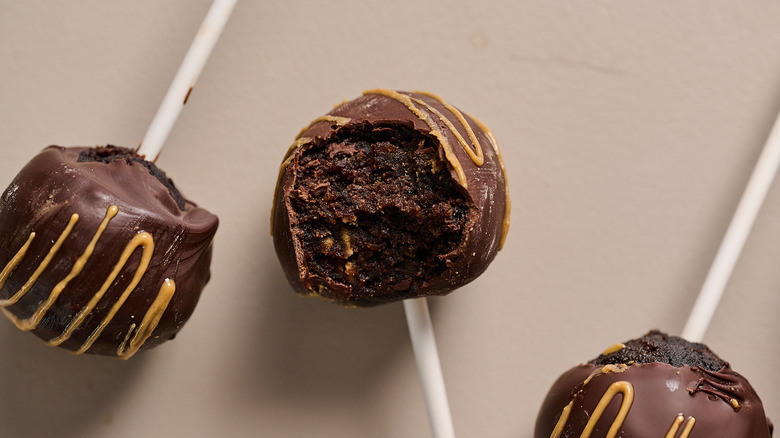
- 2 cups milk
- 2 teaspoons white vinegar
- ½ cup Greek yogurt
- ¼ cup vegetable oil
- 1 ½ cups oat flour
- 1 cup granulated sugar
- ½ cup protein powder
- ½ cup cocoa powder
- 2 teaspoons baking soda
- 2 teaspoons baking powder
- 1 teaspoon salt
- ½ + ½ cup peanut butter, divided
- 2 cups 70% dark chocolate chips, melted
- Preheat the oven to 350 F.
- Prepare a 9x13-inch pan with parchment paper, then grease the pan.
- In a large bowl, combine the milk, vinegar, yogurt, and oil.
- Add the flour, protein powder, cocoa powder, sugar, baking soda, baking powder, and salt.
- Stir until just combined; do not overmix.
- Pour the batter into the prepared cake pan and bake for 35–40 minutes, or until a toothpick inserted into the center comes out clean.
- Let cool, then crumble the cake into a large bowl.
- Add ½ cup peanut butter and mix until the batter is wet enough to form into balls.
- Form into 1-inch balls and place on a wax-lined sheet. Refrigerate for 2 hours.
- Once firm, insert a candy stick into each cake pop.
- Dip each pop into the melted chocolate until covered, shake off the excess, then stand on a styrofoam block to dry.
- Microwave the remaining ½ cup peanut butter and add to a piping bag.
- Drizzle the melted peanut butter over the cake pops and let dry before serving.
| Calories per Serving | 572 |
| Total Fat | 37.3 g |
| Saturated Fat | 11.3 g |
| Trans Fat | 0.1 g |
| Cholesterol | 4.9 mg |
| Total Carbohydrates | 45.0 g |
| Dietary Fiber | 6.9 g |
| Total Sugars | 26.6 g |
| Sodium | 334.6 mg |
| Protein | 20.5 g |
